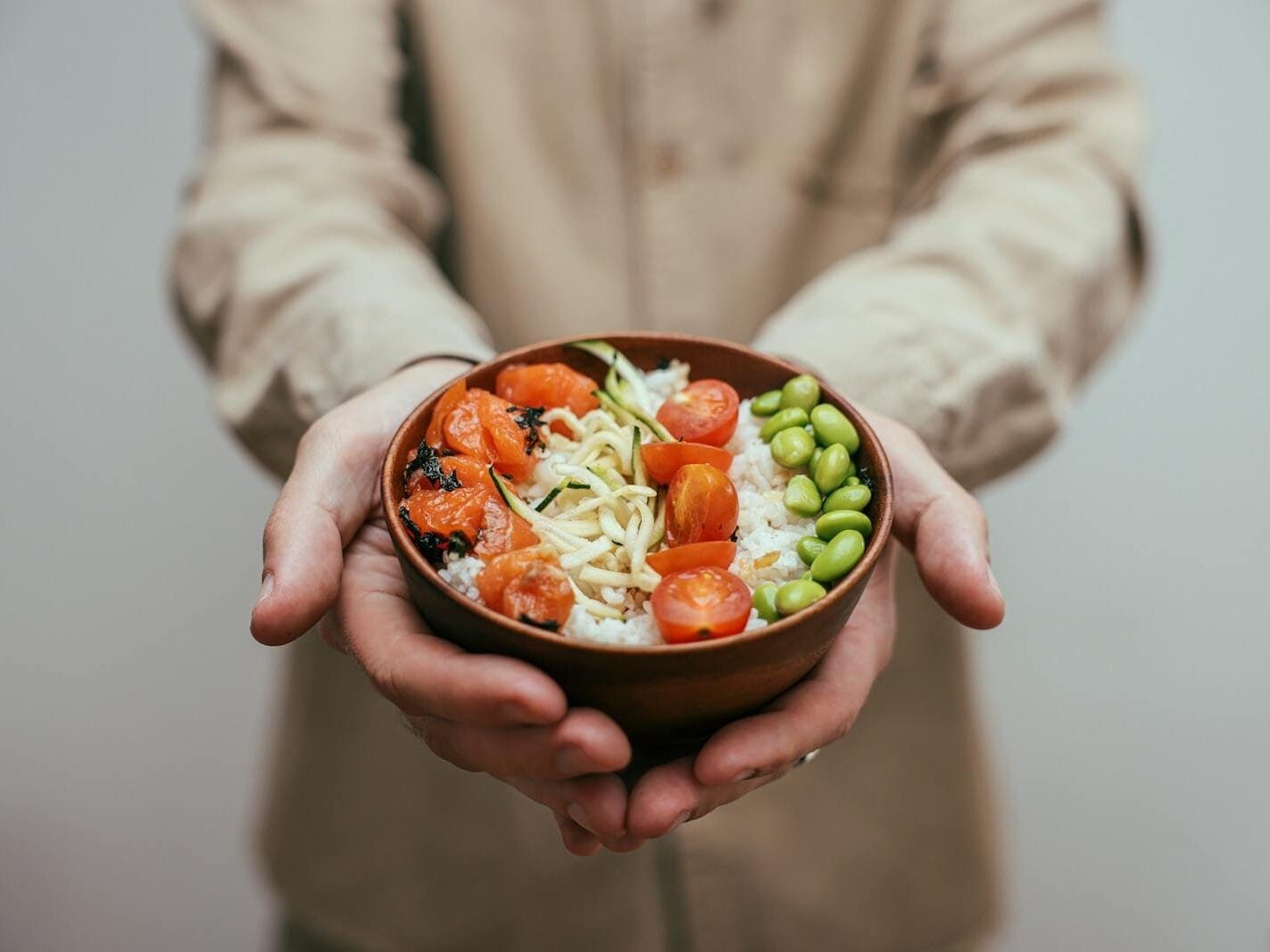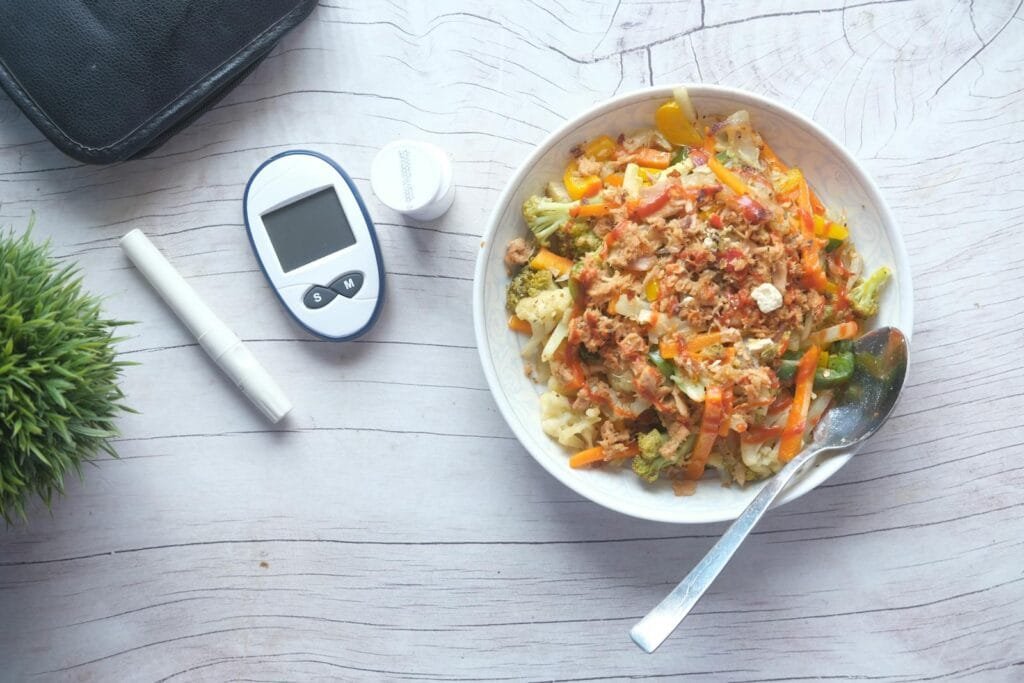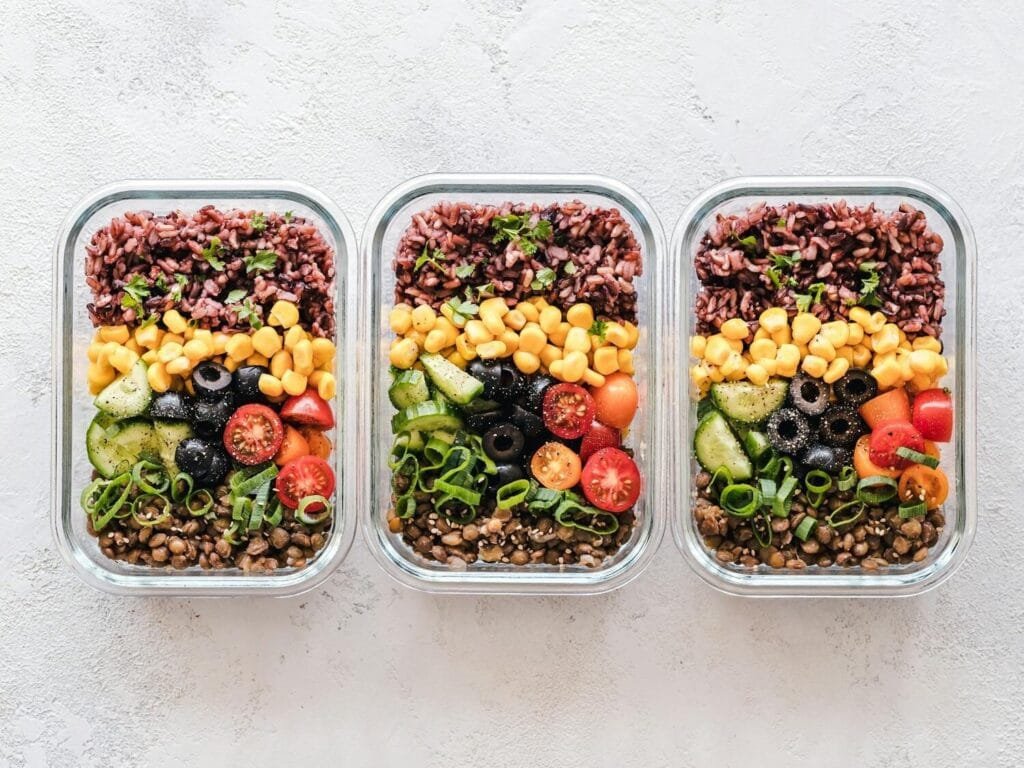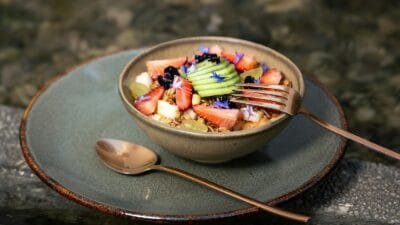Introduction
Managing blood sugar levels is a crucial aspect of living with diabetes, and one of the most important factors in maintaining control is making informed food choices. While meal planning is typically a primary focus, the snacks that are consumed between meals can also play a significant role in stabilizing blood sugar and preventing glucose spikes. For diabetics, choosing the right snacks is essential to avoid unnecessary fluctuations in blood sugar while providing the body with necessary nutrients.
In this article, we will explore why snacking is important for diabetics, and offer key considerations for selecting the most beneficial snacks. We’ll provide a detailed list of the best snacks to enjoy between meals, including options like raw vegetables with hummus, nuts and seeds, hard-boiled eggs, Greek yogurt, and many more. Additionally, we’ll share practical advice for incorporating these snacks into a diabetes-friendly meal plan and answer frequently asked questions about snacking for diabetics. By the end, you’ll have a clearer understanding of how to make smart, blood sugar-friendly snack choices that support your overall health and diabetes management.
Why Snacking is Important for Diabetics

For individuals with diabetes, snacking between meals is more than just a way to curb hunger—it’s an essential practice for maintaining stable blood sugar levels throughout the day. Properly timed snacks can prevent the dramatic swings in blood sugar that can occur when meals are skipped or when there are long gaps between eating. Without regular intake of food, the body may experience hypoglycemia (low blood sugar), which can lead to dizziness, confusion, and fainting, or hyperglycemia (high blood sugar), which can result in more severe long-term health issues such as kidney damage, nerve damage, and increased risk of cardiovascular disease.
Snacks can act as a vital bridge between meals, offering the body a steady source of energy and ensuring that blood glucose levels remain within a healthy range. By maintaining this balance, snacks help prevent the feeling of being overly hungry, which may lead to overeating during meals and disrupt the delicate equilibrium needed to manage diabetes effectively.
However, it’s important to remember that not all snacks are created equal. While it’s tempting to grab convenient processed snacks like chips, candies, or pastries, these often contain high amounts of sugar, unhealthy fats, and refined carbohydrates that can cause blood sugar spikes. These types of snacks can be detrimental to someone with diabetes, exacerbating blood sugar management issues. Instead, it’s crucial to focus on nutrient-dense options that provide lasting energy without the negative impact on blood sugar levels.
Diabetics should prioritize snacks that are rich in fiber, which slows down the absorption of sugar and helps maintain stable blood glucose levels. Foods high in protein, such as nuts, seeds, Greek yogurt, or lean meats, are also excellent choices, as they can help keep you feeling full longer and prevent blood sugar crashes. Additionally, healthy fats from sources like avocado, olive oil, or nuts can further contribute to balanced energy levels.
The key to snacking for diabetics is thoughtful selection—choosing whole, unprocessed foods that not only support blood sugar management but also offer essential vitamins and minerals. By making wise snack choices, diabetics can better regulate their condition and enjoy more consistent energy levels throughout the day, leading to improved overall health and well-being.
Key Considerations for Choosing Snacks for Diabetics
When it comes to managing diabetes through diet, selecting the right snacks is crucial. The goal is to choose foods that support blood sugar control while also providing balanced nutrition. Here are some key considerations to keep in mind when picking snacks for diabetes management:
1. Glycemic Index (GI):
The glycemic index measures how quickly a food causes blood sugar to rise after consumption. Foods with a high GI can cause rapid spikes in blood sugar, which can be dangerous for diabetics. To avoid this, opt for snacks with a low glycemic index, as these will release sugar more slowly into the bloodstream, helping to keep blood sugar levels stable. Examples of low-GI snacks include whole grains, non-starchy vegetables (like leafy greens and cucumbers), and most nuts. These choices are slow-digesting and less likely to cause fluctuations in blood sugar.
2. Portion Control:
Even healthy snacks can cause blood sugar issues if consumed in large quantities. It’s important to practice portion control to avoid overeating, which could lead to a spike in blood sugar. Moderation is key—consider measuring out snack portions or using smaller containers to help avoid the temptation of overindulgence.
3. Nutrient Balance:
For a snack to effectively support blood sugar management, it should contain a good balance of nutrients. A combination of protein, healthy fats, and complex carbohydrates is ideal. Protein and healthy fats slow down the digestion process, which helps prevent blood sugar spikes by ensuring a gradual release of glucose. Complex carbohydrates, such as those found in whole grains, provide a steady source of energy without overwhelming the body with sugar.
4. Avoid Added Sugars:
One of the most important things to watch out for when selecting snacks is the amount of added sugars. Excess sugar intake can quickly raise blood glucose levels, making it difficult to manage diabetes. Always check the ingredient list and nutrition label of any packaged snacks to ensure there are no hidden added sugars. Opt for snacks that are naturally sweet, such as fruits, or those that do not contain added sugars, like unsweetened yogurt or raw nuts.
5. Hydration:
It’s easy to confuse thirst with hunger, especially when you’re craving a snack. Before reaching for a snack, try drinking a glass of water first to see if your body is simply dehydrated. Staying hydrated is essential for overall health and can help control unnecessary snacking. Drinking water regularly can also help prevent the feeling of hunger between meals and improve blood sugar control.
By keeping these considerations in mind, diabetics can make better snack choices that support both short-term and long-term health. Prioritizing snacks that are low in sugar, well-balanced, and portion-controlled will go a long way in managing diabetes and maintaining steady blood glucose levels.
Best Snacks for Diabetics Between Meals

Choosing the right snacks between meals is essential for managing blood sugar levels and maintaining overall health. Here’s a list of healthy, diabetes-friendly snacks that can provide steady energy and prevent blood sugar fluctuations:
1. Raw Vegetables with Hummus
- Benefits: Low in calories, rich in fiber, and packed with vitamins and minerals, making it a nutritious choice.
- GI: Low
- Best Choices: Carrots, cucumbers, bell peppers, and celery. These vegetables are easy to prepare and offer a satisfying crunch, paired with protein-rich hummus.
2. Nuts and Seeds
- Benefits: High in healthy fats and protein, which help slow digestion and prevent rapid blood sugar spikes.
- GI: Low
- Best Choices: Almonds, walnuts, chia seeds, and flaxseeds. A small handful of these nutrient-dense options is a satisfying, filling snack.
3. Hard-Boiled Eggs
- Benefits: A great source of protein, which helps stabilize blood sugar and keeps you feeling full for longer.
- GI: Low
- Best Choices: Limit to 1-2 eggs per snack to prevent excess calorie intake. Hard-boiled eggs are convenient and portable.
4. Greek Yogurt (Unflavored, Low-Fat)
- Benefits: High in protein and probiotics, which support gut health and contribute to blood sugar control.
- GI: Low
- Best Choices: Pair with fresh berries for added fiber and antioxidants. Avoid flavored yogurts that contain added sugars.
5. Whole Grain Crackers with Avocado or Peanut Butter
- Benefits: A good balance of complex carbohydrates, healthy fats, and protein, which helps stabilize blood sugar levels.
- GI: Low to moderate
- Best Choices: Look for whole grain crackers with minimal added ingredients and pair with avocado or natural peanut butter for extra nutrients.
6. Fresh Fruits
- Benefits: A natural source of sugar, fiber, and essential vitamins, which provide a quick energy boost without causing large blood sugar fluctuations.
- GI: Low to moderate
- Best Choices: Opt for smaller portions of fruits like berries, citrus, and apples, as they have a lower glycemic index compared to other fruits.
7. Cottage Cheese
- Benefits: High in protein and calcium, which contribute to better blood sugar control and overall health.
- GI: Low
- Best Choices: Choose low-sodium options to keep your snack healthy and avoid excess sodium intake.
8. Dark Chocolate (70% Cocoa or Higher)
- Benefits: Rich in antioxidants, dark chocolate can satisfy sweet cravings without significantly raising blood sugar levels when consumed in moderation.
- GI: Low to moderate
- Best Choices: Limit to 1-2 small squares per snack to avoid overindulgence. Make sure the chocolate has at least 70% cocoa for the best health benefits.
9. Edamame
- Benefits: High in protein and fiber, making it a filling and satisfying snack that can help stabilize blood sugar levels.
- GI: Low
- Best Choices: Steam or boil edamame for a quick and easy snack that requires little preparation.
10. Popcorn (Air-Popped, Unsalted, and Without Added Butter)
- Benefits: Low in calories, high in fiber, and a great option for those looking for a light snack that won’t cause blood sugar spikes.
- GI: Low to moderate
- Best Choices: Air-popped popcorn is a healthy choice. Season it with herbs and spices for added flavor, and avoid butter or excessive salt.
These snacks are not only diabetes-friendly but also offer a variety of flavors and nutrients, helping you stay full and energized throughout the day. By choosing low-glycemic, nutrient-dense snacks, you can support better blood sugar management and overall health.
Table: Best Snacks for Diabetics
| Snack | Portion Size | GI | Key Nutrients |
|---|---|---|---|
| Raw vegetables with hummus | 1 cup veggies + 2 tbsp hummus | Low | Fiber, vitamins, minerals |
| Nuts and seeds | 1 small handful | Low | Healthy fats, protein |
| Hard-boiled eggs | 1-2 eggs | Low | Protein, vitamins |
| Greek yogurt | 6 oz serving | Low | Protein, probiotics |
| Whole grain crackers | 1-2 crackers | Low-moderate | Fiber, B vitamins |
| Fresh fruits | 1 small fruit | Low-moderate | Fiber, antioxidants |
| Cottage cheese | 1/2 cup | Low | Protein, calcium |
| Dark chocolate | 1-2 squares | Low-moderate | Antioxidants |
| Edamame | 1/2 cup cooked | Low | Protein, fiber |
| Popcorn | 3 cups air-popped | Low-moderate | Fiber, whole grains |
Incorporating Snacks into Your Diabetes Meal Plan

Snacking can be a healthy and effective way to manage blood sugar levels between meals, as long as the snacks are carefully chosen to be nutrient-dense and consumed in appropriate portions. Here are some useful tips for incorporating snacks into your daily routine for better diabetes management:
1. Plan Ahead:
One of the most important strategies for successful snacking is preparation. Keep a list of healthy snack options readily available to avoid the temptation of reaching for processed or sugary foods. Preparing snacks in advance ensures you have nutritious choices on hand, helping you avoid the pitfalls of convenience foods that may spike your blood sugar levels.
2. Pair Snacks:
For better blood sugar control, aim to combine snacks from different food groups. Pairing protein with fiber or healthy fats is an excellent strategy. For instance, combining nuts (which are rich in healthy fats and protein) with vegetables or whole-grain crackers can help slow digestion and prevent rapid blood sugar spikes. This balance promotes sustained energy throughout the day.
3. Monitor Blood Sugar:
Every individual’s body reacts differently to various foods. Use a glucometer to track how different snacks impact your blood sugar levels. By keeping an eye on your blood sugar before and after snacking, you can determine which snacks work best for you and adjust your choices accordingly. This also helps you make informed decisions about portion sizes and snack combinations.
4. Stay Active:
Physical activity plays a crucial role in managing diabetes. Consider pairing your snack time with light physical activity, such as a short walk or stretching. Exercise improves insulin sensitivity, helping your body use insulin more effectively and aiding in the regulation of blood sugar levels. A little movement after snacking can help prevent blood sugar spikes and keep you feeling more energized.
By thoughtfully incorporating snacks into your diabetes meal plan and following these tips, you can maintain steady blood sugar levels and improve overall health. Planning ahead, choosing balanced snacks, and staying active are key elements in managing diabetes effectively.
“Snacks are an essential part of diabetes management. They help maintain blood sugar balance and prevent extreme fluctuations. The key is to choose snacks that are nutrient-dense, low in added sugars, and rich in fiber and protein.” – American Diabetes Association
FAQs About Snacks for Diabetics
1. Can diabetics eat sweets or sugary snacks?
Answer: While it’s generally best to avoid sugary snacks, small portions of low-sugar treats, such as dark chocolate (70% cocoa or higher) or fresh fruit, can be part of a balanced meal plan. The key is moderation, and it’s always advisable to consult with your healthcare provider or dietitian before incorporating sweets into your routine.
2. Are all fruits safe for diabetics?
Answer: Most fruits are safe for diabetics when consumed in moderation due to their high fiber content, which helps slow sugar absorption. However, some tropical fruits like mangoes and pineapples have higher sugar content and should be consumed in smaller portions. Opt for fruits with a lower glycemic index, such as berries, apples, and citrus, for better blood sugar control.
3. Can diabetics drink fruit juice as a snack?
Answer: Fruit juice is high in natural sugars and lacks the fiber needed to slow down sugar absorption, making it unsuitable for diabetics. Instead, stick to whole fruits or vegetable juices that have no added sugar. These options provide more fiber and nutrients without causing a rapid spike in blood sugar levels.
4. How often should diabetics snack between meals?
Answer: The frequency of snacking depends on individual needs, medications, and blood sugar levels. Typically, 1-2 snacks per day between meals are recommended to maintain stable blood sugar levels. However, it’s important to consult with your healthcare team to determine the right snacking schedule and portion sizes based on your specific diabetes management plan.
Conclusion
Snacking between meals is an important aspect of diabetes management, offering an opportunity to maintain stable blood sugar levels throughout the day. By carefully selecting snacks that are nutrient-dense, low in added sugars, and rich in fiber, protein, and healthy fats, diabetics can effectively control their blood glucose levels and support overall health. Balanced snacks help prevent blood sugar spikes or drops, keeping energy levels consistent and reducing the risk of complications associated with diabetes.
It’s also essential to practice portion control and mindful eating when choosing snacks to avoid overeating or consuming excessive calories, which can negatively impact blood sugar regulation. Remember that every individual’s needs are unique, so it’s vital to tailor your snack choices to your specific lifestyle, activity level, and medication regimen.
Consulting with a dietitian or healthcare provider is key to creating a personalized meal plan that aligns with your diabetes management goals. They can help you determine the best snack options, portion sizes, and overall dietary adjustments to support your health and well-being. By making informed decisions about snacking and integrating healthy choices into your daily routine, you can better manage your diabetes and enjoy a balanced, active life.



